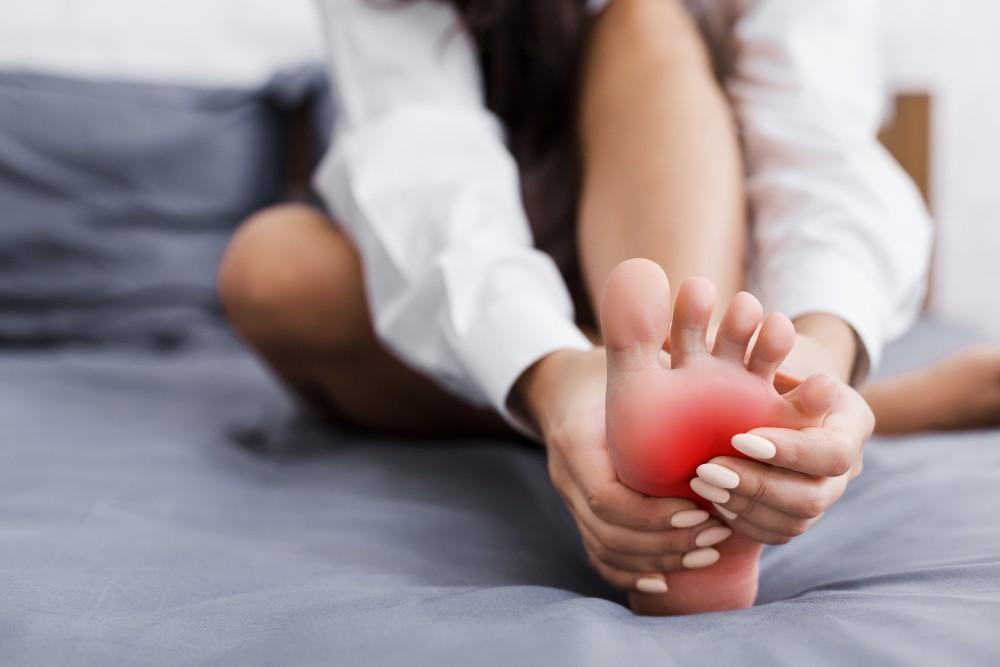
Busting Bunion Myths: What to Know About Treatment Options

Think fast. Have you ever heard about the condition hallux valgus? Did you know that one-third of Americans are affected by it? You’re likely familiar with the more common name for this bony protrusion that emanates from your big toe joint — a bunion.
Some people aren’t bothered by their bunions, but this foot deformity can cause pain and other unpleasant symptoms. The good news is there are treatments that can help if you’re suffering because of bunions.
The accomplished and trustworthy team at Premier Foot & Ankle has treated bunions of every severity level, from tiny bunionettes (small bunions that form at your pinky toe joint) to the more common ones that are located at your big toe joint.
We’re invested in offering you the most advanced treatments available for many foot conditions — bunions included.
Why do bunions form?
Bunions actually develop for diverse reasons, including:
- Heredity — there’s a definite genetic component
- Sustained periods of wearing narrow or pointy shoes with tight toe boxes
- Living with an inflammatory condition, such as lupus or rheumatoid arthritis
- Abnormal bone structure
- Congenital foot problems
- Osteoarthritis
- Working on your feet for extended periods
You’re at higher risk for developing a bunion if you’re female, if you have a history of foot injuries, and if your parents have bunions or foot mechanics problems. In fact, over 70% of people whose parents have bunions will go on to develop them as well.
Bunions cause symptoms in addition to pain
Your bunion can cause throbbing pain that can worsen when you wear shoes, as your bunion rubs against your shoe and becomes more irritated. Other uncomfortable symptoms include swelling, redness, big toe stiffness, and corns or calluses (small, round, thickened skin patches and larger, uneven, thickened skin patches, respectively).
You might notice numbness in your big toe and have limited ability to move it. Not only can bunion symptoms impact the inside of your toe joint, they can affect the entire area around your toe joint.
Unfortunately, bunions can also lead to another foot deformity, hammertoe. This is a condition that causes your middle toe joints and tendons to tighten, hurt, and become permanently bent.
Bunions: Myth versus fact
Now that we’ve given you some bunion background, you should know that there are quite a few beliefs about bunions that are flat-out incorrect, and we’ll cover a few right here.
Myth #1: Bunions will resolve with time
On the contrary, bunions are progressive, and leaving them alone only gives them the chance to become more pronounced and symptoms to worsen.
Myth #2: Bunions just look weird and aren’t really problematic
As we outlined above, bunions cause real and protracted discomfort and even mobility issues.
Myth #3: Only the elderly get bunions
Definitely untrue. Although about a quarter of people over 60 have bunions, over 11% of people younger than 20 and over 12% of people ages 20-60 have them.
Myth #4: Home remedies are all you need to treat bunions
We wish it were so, but this simply isn’t true. You can cushion and protect your bunion with drugstore bunion pads, and some people swear by toe spacers, devices that temporarily realign your toes while you wear them and relieve pressure on your bunion.
Some people with bunions are also foot exercise devotees and do exercises like lifting your forefoot and spreading your toes out, rolling your foot over a tennis ball, picking up marbles individually with your feet, and more.
Even though these methods may provide temporary relief from bunion discomfort, they don’t address the root problem of bunions — the structural issue.
Myth #5: Treatments for bunions are limited
At Premier Foot & Ankle, we offer a range of effective treatments for bunions, depending on their severity, including:
- Prescription medications for pain, such as anti-inflammatories and steroids
- Medical devices like shoe inserts and custom orthotics
- Steroid injections
- Splints
- Padding options
- Noninvasive multiwave locked system (MLS) laser therapy to stimulate healing
- Physical therapy
- Bunion surgery, including highly customized reconstructive foot surgery
Contrary to popular belief, bunion surgery doesn’t always have to be a complicated procedure with a long or painful recovery period. We perform minimally invasive bunion surgery that requires smaller incisions as opposed to a single large one.
This approach produces a significantly smaller and less noticeable scar. Minimally invasive surgery is also associated with faster recovery, less postoperative pain, and reduced bleeding and chances of developing a post-surgery infection.
There’s no reason to allow your bunions to go untreated any longer. To learn more about bunion treatment, contact one of our five convenient Texas locations to schedule an appointment today. Call our office or book online anytime.
You Might Also Enjoy...


Lapiplasty: How 3D Bunion Correction Works

How to Get to the Root of Your Chronic Heel Pain

5 Ways to Care for Your Athletic Feet This Year

How to Keep Toenail Fungus From Spreading


